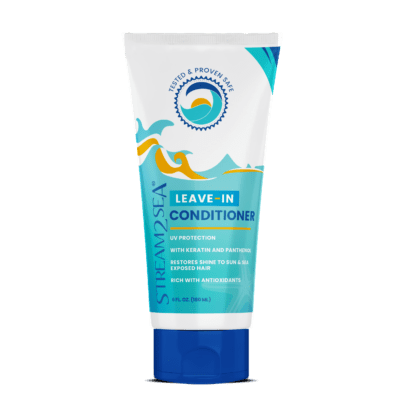A new O has been added to the list of toxic chemicals found in some sunscreens – with a significant body of research detailing the damage it can cause to both humans and aquatic life.
Similar to oxybenzone and octinoxate, octocrylene is another UV filter that is absorbed into the skin to help offer sun protection. The FDA approves octocrylene as non-harmful at concentrations of up to 10%, so why is it so bad?
It began with research showing that oxybenzone and octinoxate are harmful, and sunscreen companies found an alternative in avobenzone. However, avobenzone has to be stabilized by octocrylene because by itself it breaks down too quickly and doesn’t provide long-lasting sun protection. Therefore, chances are great that even if your sunscreen does not have the two Os, it now has another harmful one.
So What Is So Bad About Octocrylene?
Octocrylene has been shown to accumulate in various types of aquatic life causing DNA damage, developmental abnormalities and adverse reproductive effects. Disturbing concentrations of harmful UV filters including octocrylene have been found in seafood that humans consume. And like octinoxate, octocrylene acts a photosensitizer which means it increases the production of free radicals in your skin when exposed to UV light – in turn increasing the risks of skin cancer and premature aging.
An alternative to harmful chemical sunscreens, is to use mineral or physical sunscreens instead. “Mineral sunscreens are made with titanium dioxide and zinc oxide…Evidence suggests that few if any zinc or titanium particles penetrate the skin to reach living tissues, according to the Environmental Working Group (EWG).
Recently, the US Virgin Islands not only banned oxybenzone and octinoxate but also octocrylene, recognizing that it is just as harmful as the other two O’s. This full ban takes effect in March of 2020 and, for all intents and purposes, only allows mineral sunscreens to be used in the islands.
At Stream2Sea, we are doing our absolute best to share scientific facts, research and studies, so we can help protect the coral reefs from tourism related pollution, and promote better health and safety guidelines for our customers. Our founder Autumn Blum was invited to testify in the Senate hearing supporting the ban of all three harmful chemicals. Join us to combat this harmful chemical, and make sure to use mineral sunscreens like our proven reef-safe products.
Besides using safe products, the next most important thing you can do is tell everyone you know! If you’re as passionate as we are about protecting coral reefs, fish, marine life, and your health and wellness — we need you to shout it from the mountaintops (or fly bridges)! Share scientific facts with your friends and family — let them know what ingredients they need to avoid. Awareness is spreading BECAUSE of passionate advocates like you, and for that, you have our gratitude! #ProtectWhatYouLove
About the Author
Alexia Skrbic is the Stream2Sea Scientific Communications intern. She received her B.S. in Biological Science with a minor in environmental science in 2018 from Chapman University. She is currently completing her Masters of Professional Science in marine conservation from University of Miami’s Rosenstiel School of Marine and Atmospheric Sciences while working with Stream2Sea.
